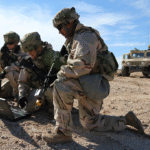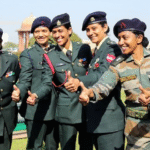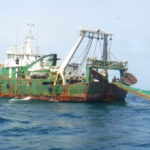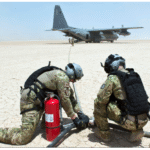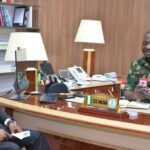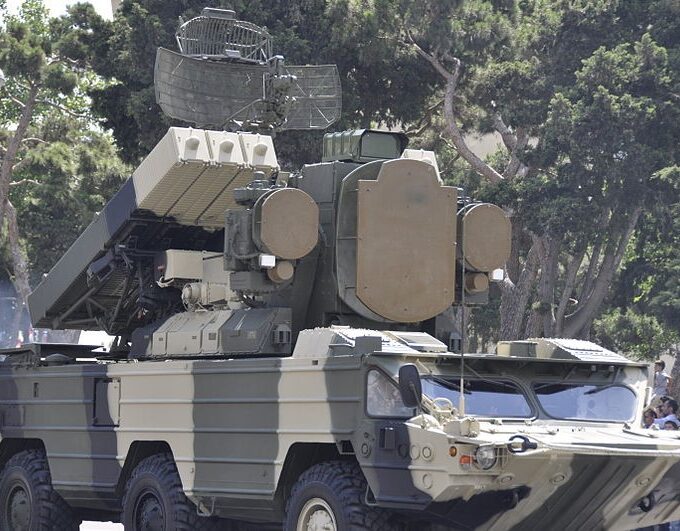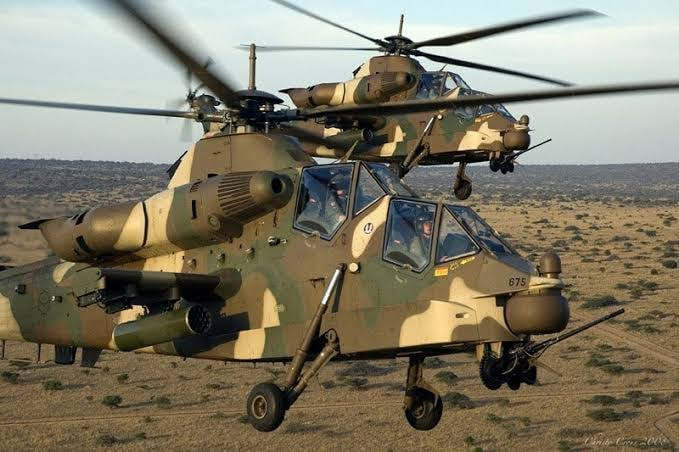Pilots Without Borders: African Airmen in Regional Missions
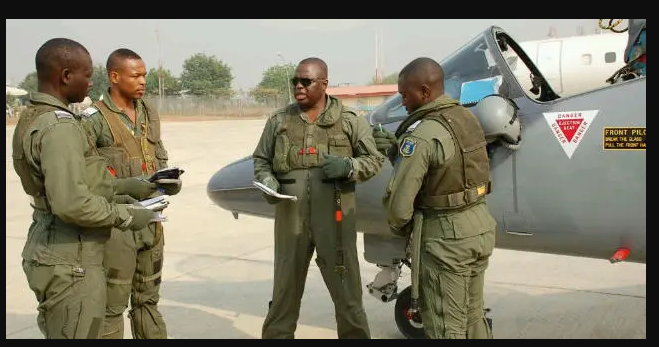
Africa’s security challenges often transcend national boundaries; however, the continent’s airmen are emerging as quiet but decisive actors in regional stability. Whether flying troop transport aircraft for African Union (AU) peacekeeping forces, delivering humanitarian supplies into disaster zones, or conducting reconnaissance over conflict-affected areas, African pilots are increasingly engaged in missions that demand skill, diplomacy, and a stunch commitment to cross-border cooperation.
A Tradition of Continental Solidarity in the Skies
The idea of African pilots operating beyond their national airspace is not new. In the 1970s and 1980s, aircrews from countries such as Nigeria, Egypt, and Ethiopia participated in multinational operations, both military and humanitarian. However, these early deployments were ad hoc, often driven by political alliances or bilateral agreements rather than structured continental security frameworks.
Today, the approach is far more coordinated. Institutions such as the African Standby Force (ASF) and regional blocs like the Economic Community of West African States (ECOWAS) and the Southern African Development Community (SADC) have formalised air mobility as a strategic enabler in peace and security operations. The AU’s Peace and Security Council regularly mandates missions requiring rapid deployment capabilities—something only air assets can provide at short notice.
ECOWAS and the West African Model
West Africa has arguably been the most active region in deploying “pilots without borders.” During the ECOWAS Mission in Liberia (ECOMIL) and later in Sierra Leone (ECOMOG), Nigerian Air Force pilots flew transport and combat aircraft into hostile territory, providing vital airlift for troops and supplies. These operations were high-risk, often involving low-level flying to avoid ground fire and the delivery of aid in unsecured airstrips.
In recent years, the fight against insurgencies in Mali and Burkina Faso has seen a renewed reliance on multinational air cooperation. Ghana, for instance, has deployed C-295 transport aircraft to support regional logistics, while Senegalese pilots have participated in joint exercises designed to enhance interoperability between member states’ air forces.
The Eastern Africa Experience
In the Horn of Africa, the African Union Mission in Somalia (AMISOM)—now the African Union Transition Mission in Somalia (ATMIS)—has provided another platform for African airmen to operate in multinational settings. Ugandan and Kenyan pilots have flown missions ranging from troop insertion and medevac to close air support against Al-Shabaab positions.
Operating in Somalia’s hostile airspace demands advanced skills and a strong understanding of multinational command structures. Pilots often coordinate with ground forces from different nations, NATO advisers, and humanitarian agencies—requiring both tactical flexibility and cultural sensitivity.
Humanitarian Airlift and Disaster Relief
While combat and peacekeeping draw much attention, humanitarian air operations form an equally important part of African pilots’ regional contributions. Following the 2019 Cyclone Idai in Mozambique, pilots from several SADC countries—South Africa, Tanzania, and Malawi among them—flew critical supply missions into areas cut off by flooding. Helicopter crews conducted hundreds of sorties, rescuing stranded civilians and delivering food, water, and medical supplies.
Such missions highlight the dual-use nature of Africa’s air assets: the same aircraft that can deploy troops into conflict zones can also serve as lifelines in humanitarian crises. This versatility strengthens the argument for investment in regional air mobility fleets, rather than solely national inventories.
Training for Multinational Missions
One of the key enablers of “pilots without borders” has been the rise of regional and international training programmes. The Air Force Command and Staff College in Nigeria, the South African Air Force College, and Ethiopia’s Harar Meda Air Base all host multinational cohorts, fostering cross-border familiarity from the outset of an officer’s career.
Beyond Africa, partnerships with the United States’ Air Forces Africa (AFAFRICA), France’s Armée de l’Air, and China’s People’s Liberation Army Air Force have facilitated advanced flight training, tactical planning, and joint exercise participation. Programmes like Exercise African Lion, Blue Flag, and Shared Accord allow African airmen to train in simulated multinational environments, enhancing both skills and trust.
Challenges in Cross-Border Air Cooperation
Despite the successes, significant hurdles remain. Aircraft availability is a major constraint—many African air forces operate ageing fleets with limited range and payload capacity. Maintenance, spare parts supply chains, and the high cost of fuel can also limit sustained deployments.
Diplomatic coordination is another challenge. Overflight permissions, rules of engagement, and air traffic control procedures vary across the continent, sometimes leading to delays that can undermine mission effectiveness. In some cases, language barriers between Francophone, Anglophone, and Lusophone air crews have slowed operational tempo.
Security risks are also substantial. In conflict zones, pilots face the danger of surface-to-air missile attacks, small-arms fire, and hostile ground conditions during landings and take-offs. These realities demand advanced threat awareness and the integration of defensive systems into mission planning.
The Strategic Value of African Airmen Abroad
The deployment of African airmen beyond their borders serves multiple strategic purposes. Operationally, it expands the continent’s rapid response capabilities in times of crisis. Politically, it strengthens bonds between neighbouring states, demonstrating solidarity in the face of shared threats. From a professional standpoint, it exposes pilots to varied environments and operational doctrines, accelerating the growth of Africa’s aviation competence.
Moreover, these missions enhance Africa’s credibility in the global security arena. By fielding capable airmen in multinational contexts, the continent signals its readiness to contribute meaningfully to peacekeeping and humanitarian initiatives worldwide.
The future of “pilots without borders” in Africa will likely depend on several factors: sustained investment in air mobility assets, expansion of joint training programmes, and the institutionalisation of air cooperation frameworks within regional economic communities. The proposed AU Air Mobility Command, if realised, could serve as a central hub for coordinating multinational air operations, pooling aircraft and crews from across the continent.
Technological advances will also play a role. Unmanned aerial systems (UAS) may augment manned aircraft in certain missions, reducing risk to pilots while increasing surveillance and delivery capabilities. However, the human element—judgement, adaptability, and leadership—will remain irreplaceable in the high-stakes environments where these airmen operate.
African airmen serving in regional missions embody the principle that security in the modern era is inherently transnational. Their work—whether dropping relief supplies in flooded Mozambican villages or providing close air support to peacekeepers in Somalia—reinforces the idea that Africa’s skies, like its challenges, know no borders.
In the coming years, as threats evolve and the demand for rapid, coordinated responses grows, these “pilots without borders” will remain at the forefront of Africa’s defence diplomacy and humanitarian outreach—silent ambassadors of unity, skill, and courage.
King Richard Igimoh, Group Editor ALO
King Richard Igimoh, Group Editor African Leadership Organisation is an award-winning journalist, editor, and publisher with over two decades of expertise in political, defence, and international affairs reporting. As Group Editor of the African Leadership Organisation—publishers of African Leadership Magazine, African Defence & Security Magazine, and Africa Projects Magazine—he delivers incisive coverage that amplifies Africa’s voice in global security, policy, and leadership discourse. He provides frontline editorial coverage of high-profile international events, including the ALM Persons of the Year, the African Summit, and the African Business and Leadership Awards (ABLA) in London, as well as the International Forum for African and Caribbean Leadership (IFAL) in New York City during the United Nations General Assembly.
Recent Posts
Categories
- Air & Aerospace16
- Border Security15
- Civil Security4
- Civil Wars4
- Crisis5
- Cyber Security8
- Defense18
- Diplomacy19
- Entrepreneurship1
- Events5
- Global Security Watch6
- Industry8
- Land & Army8
- Leadership & Training5
- Military Aviation4
- Military History27
- Military Speeches1
- More1
- Naval & Maritime9
- Resources2
- Security12
- Special Forces1
- Systems And Technology9
- Tech6
- Uncategorized3
- UNSC1
- Veterans6
- Women in Defence9
Related Articles
AIR & AEROSPACE – AIR DEFENCE SYSTEMS IN AFRICA: AN UNFINISHED BUSINESS
By December 2025, Africa’s air defence picture remains uneven, shaped by rising...
ByKing Richard Igimoh, Group Editor ALODecember 24, 2025AFRICAN AIR FORCES RISE TO THE FOREFRONT IN COUNTERTERRORISM OPERATIONS
Across the vast and volatile regions of Africa, air forces once limited...
ByKing Richard Igimoh, Group Editor ALONovember 21, 2025THE SPACE RACE: AFRICA’S EMERGING AEROSPACE PROGRAMMES
Africa’s skies are no longer just a backdrop to other powers’ ambitions...
ByKing Richard Igimoh, Group Editor ALOOctober 6, 2025MILITARY HELICOPTERS IN AFRICAN OPERATIONS
Military helicopters have become important assets in African operations, offering unmatched versatility...
ByKing Richard Igimoh, Group Editor ALOSeptember 23, 2025

